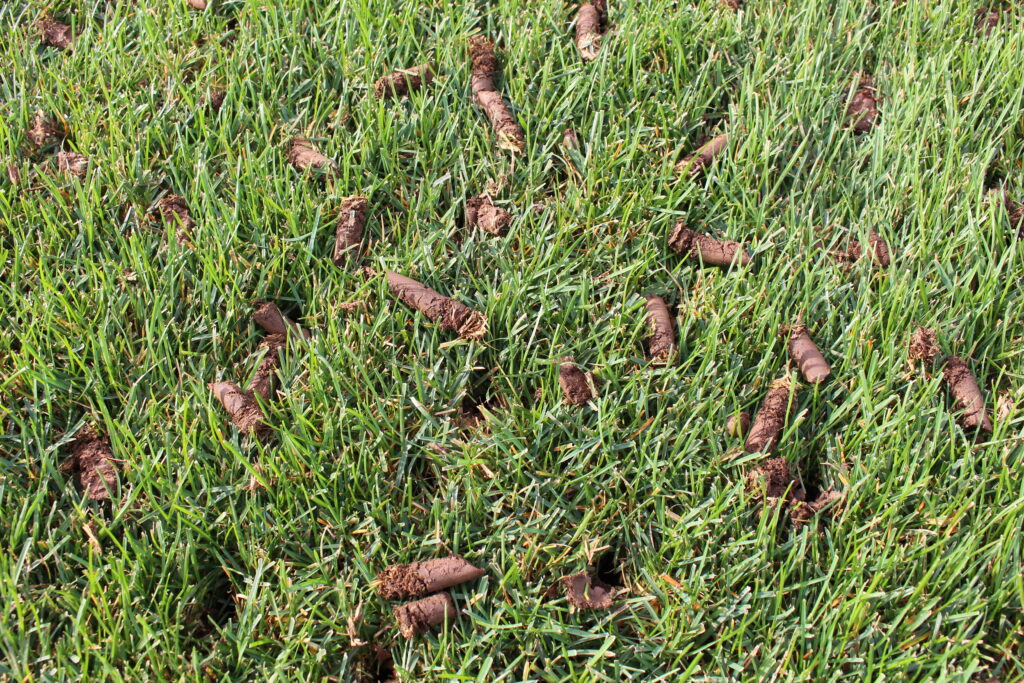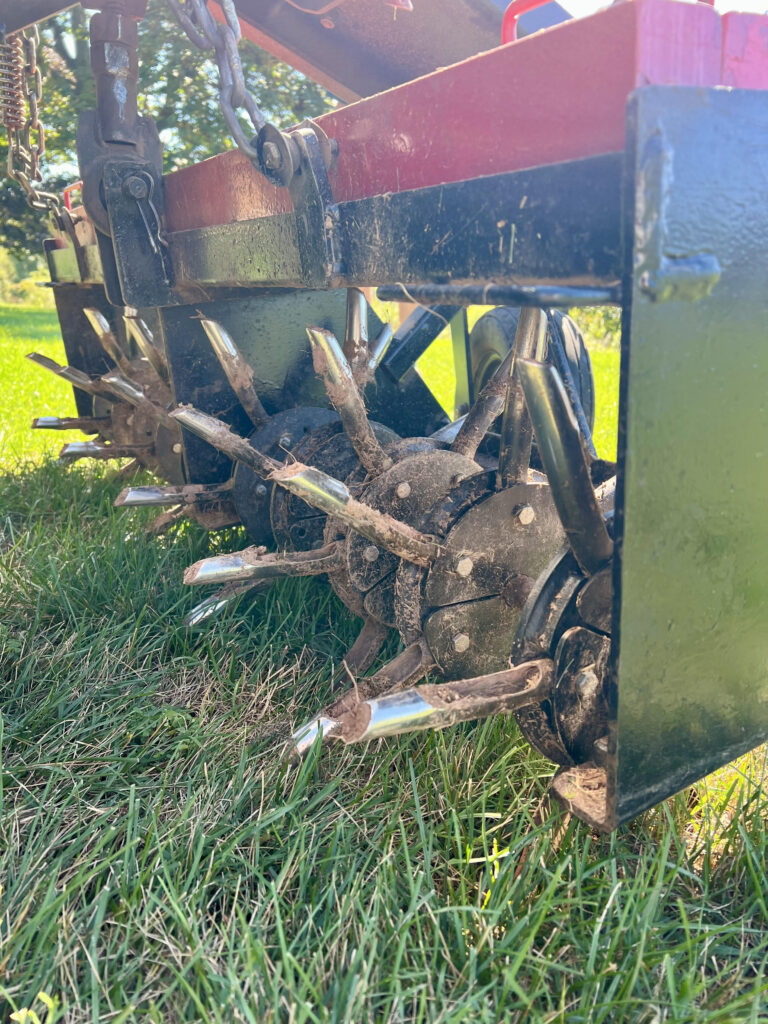Table of Contents
ToggleLast Updated on September 26, 2025
Ever notice how compacted soil can feel underfoot? Just imagine how your grass roots feel trying to push through that! Your lawn could be silently suffering from compaction. That’s where core aeration comes in—a powerful, yet often overlooked, lawn care practice that can truly transform your turf.
What Exactly Is Core Aeration?
Simply put, core aeration is the process of mechanically removing small plugs (or “cores”) of soil, thatch, and grass from your lawn. These plugs are typically about 2–3 inches long and roughly the diameter of your finger. While it might look a little messy for a day or two, these seemingly small holes make a world of difference.
Why Your Lawn Benefits from Core Aeration
Think of your lawn as a living, breathing organism. For it to thrive, its roots need access to essential resources. Over time, foot traffic, heavy equipment, and even just gravity can compact the soil, squeezing out the vital air pockets that roots need. Thatch buildup (a layer of dead grass and organic matter on top of the soil) can also create a barrier.
Here’s how core aeration helps:
- Improved Air Circulation: The holes allow air to penetrate deeper into the soil, providing much-needed oxygen to the root system. This encourages stronger, healthier roots.
- Enhanced Water & Nutrient Absorption: When water hits compacted soil, it often runs off, leaving roots thirsty. Aeration creates channels for water and nutrients (from fertilizer) to soak directly into the root zone, where they’re most needed.
- Reduced Thatch Buildup: Aeration helps break up existing thatch and incorporates it into the soil, where it can decompose naturally. This prevents thatch from becoming a suffocating layer.
- Stronger Roots, Denser Turf: With better access to air, water, and nutrients, your grass roots will grow deeper and more robust. This leads to a thicker, more resilient lawn that’s better able to withstand stress from drought, heat, and disease.
- Better Seed Germination: If you’re planning to overseed (which is often recommended after aeration), the holes provide an ideal bed for new grass seed to settle into, ensuring better seed-to-soil contact and higher germination rates.
When’s the Best Time to Aerate?
For cool-season grasses, fall (late August to early November) is generally the prime time for aeration. This gives your lawn ample time to recover and fill in those holes before winter sets in. Spring (March to May) can also work, but fall is often preferred since it coincides with prime overseeding time. Keep in mind that core aerating in the spring can interfere with pre-emergent weed control applications.
What to Expect After Aeration
Don’t be alarmed by the small plugs of soil scattered across your lawn—they’ll break down naturally in a few days or with the next rain. Continue your regular watering schedule. This is also the perfect time to overseed your lawn if needed, as the holes provide excellent pockets for new seeds to germinate.

Is DIY or Professional Aeration Right for You?
You can rent core aerators from local equipment rental stores, but they can be heavy and a bit challenging to maneuver. For many homeowners—especially those with larger lawns—hiring a professional to core aerate is a convenient and effective option. Professionals have commercial-grade equipment and the expertise to get the job done right.
By giving your lawn the room it needs to breathe, core aeration sets the stage for stronger roots, improved nutrient absorption, and a thicker, greener yard you can be proud of. Whether you tackle it yourself or bring in a professional, adding aeration to your lawn care routine—especially in the fall—will pay off season after season. Think of it as an investment in your lawn’s long-term health, resilience, and beauty.

Frequently Asked Questions About Core Aeration
Q: How do I know if my lawn needs aeration?
A: Signs your lawn may need aeration include thinning grass, puddling water after rain, excessive thatch buildup, or soil that feels hard and compacted underfoot. If your lawn experiences heavy foot traffic or sits on clay soil (common in NJ and PA), aeration is especially beneficial.
Q: How often should I aerate my lawn?
A: We recommend aerating at least every other year, but annual aeration is ideal for maintaining peak lawn health.
Q: Do I need to overseed after aeration?
A: Not always—but it’s highly beneficial. Core aeration alone improves soil health, but overseeding afterward helps fill in thin or bare spots. Core aeration provides the needed seed-to-soil contact for lawn seeding.
